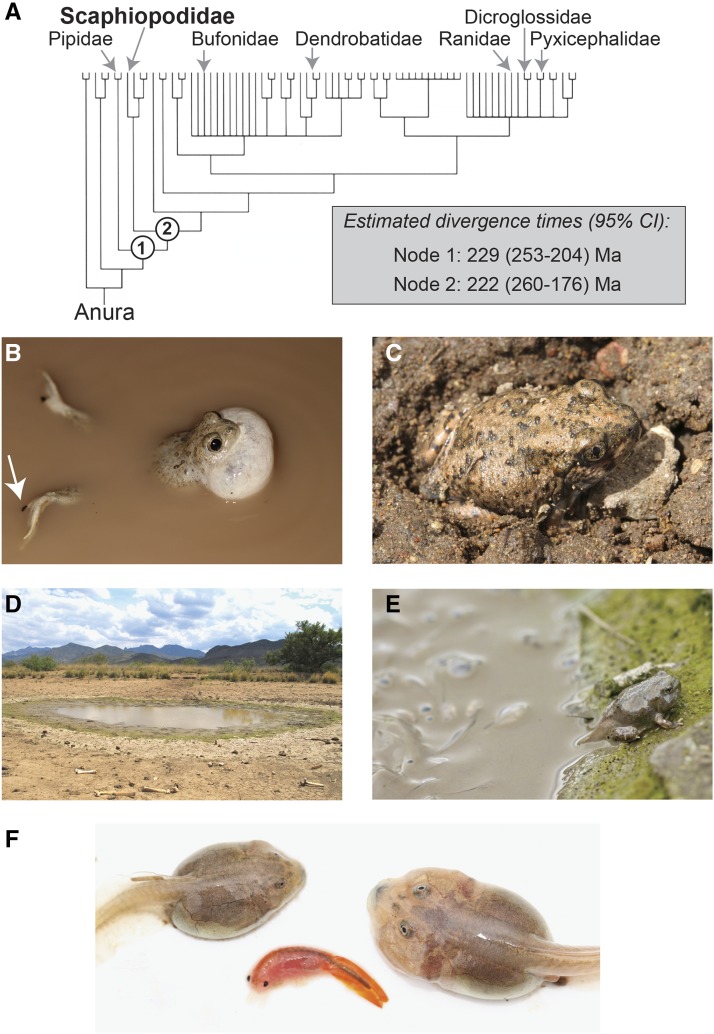Figure 1.
Evolution and natural history of New World spadefoot toads. A Phylogenetic relationships among the New World spadefoot toads (genera Spea and Scaphiopus; family Scaphiopodidae) and six other species of sequenced anurans: Xenopus laevis (Pipidae), Rhinella marina (Bufonidae), Oophaga pumilio (Dendrobatidae), Rana (Lithobates) catesbeiana (Ranidae), Nanorana parkeri (Dicroglossidae), and Pyxicephalus adspersus (Pyxicephalidae) [phylogeny after AmphibiaWeb (2018); estimated divergence times from Bossuyt and Roelants (2009)]. B Mexican spadefoot toads, Spea multiplicata, possess numerous adaptations for dealing with desert conditions including a keratinized spade on their hind feet (arrow), which enables them to C burrow underground. D They emerge for only a few weeks each year to feed and to breed in temporary, rain-filled pools. e Spadefoot tadpoles exhibit rapid, and adaptively flexible, larval development (here, a metamorph emerges from a drying pond). F They also produce alternative, environmentally induced morphs: a slower developing omnivore morph (left) and a more rapidly developing carnivore morph (right), which is induced by, and specializes on, animal prey, such as fairy shrimp (center).

